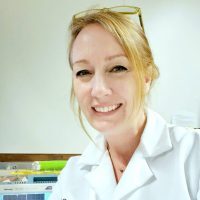CNLM FELLOW
Jill Leutgeb, Ph.D.
Jill Leutgeb, Ph.D.
Professor, Biological Sciences
University of California, San Diego
Ph.D., Leibniz Institute for Neurobiology, German
Phone: 858-246-0825
Fax: 858-534-7309
Email: jleutgeb@ucsd.edu
University of San Diego
9500 Gilman Dr. 0357
La Jolla, CA 92093-0357
Episodic memories are unique in that they contain information about what happened when and where. Although these memories are formed rapidly and occur only once they can be distinguished from many similar memories even though only few of the features of which they are composed are distinct. The hippocampus is essential for the encoding of episodic memories and has been modeled to perform this function by mediating the convergence of multiple representations of upstream cortical areas into a single, unique memory trace. Our lab is interested in understanding how the hippocampus performs this operation, as well as how the neuronal networks of this brain region combine information about what happened when and where to establish a lasting memory. The main goal of our research is to describe the neural basis of memory formation and retrieval at the systems level, and to determine how the various subregions of the medial temporal lobe, including the hippocampus, contribute to memory processing. We are interested in what type of information the distinct populations of medial temporal lobe neurons convey and how coordinated neuronal activity and synaptic plasticity in these networks contribute to the distinct computations essential for the encoding of episodic memory. Our lab is particularly interested in understanding the network computations of neuronal populations in the first processing stages of the hippocampus, namely the CA3 and dentate gyrus. The anatomically distinct arrangement of this brain region has inspired many computational models that have hypothesized its distinct role in memory formation. While behavioral studies have supported many of these predictions, very little is known about how the CA3-dentate neural network perform these functions, and what the various cell populations within the network contribute to the encoding necessary for memory formation. To address these questions we record simultaneously from large groups of neurons (up to 100) in anatomically and functionally related circuits in the mammalian brain during learning. Our lab combines high-density electrophysiology, behavioral testing, theoretical modeling, and pharmacological and molecular manipulations as a multidisciplinary approach to understanding the neural basis of cognition. Understanding the contribution of the various cell populations within the CA3-dentate network to memory formation will have considerable importance for systems neuroscience and also for translational research since the dentate gyrus is among the first structures in the brain to show decreased neuronal activity in Alzheimer’s disease. In addition, diverse changes in the dentate network and the activity patterns of its neurons have also been linked to the onset of temporal lobe epilepsy, and depression.

 Browse Fellows
Browse Fellows